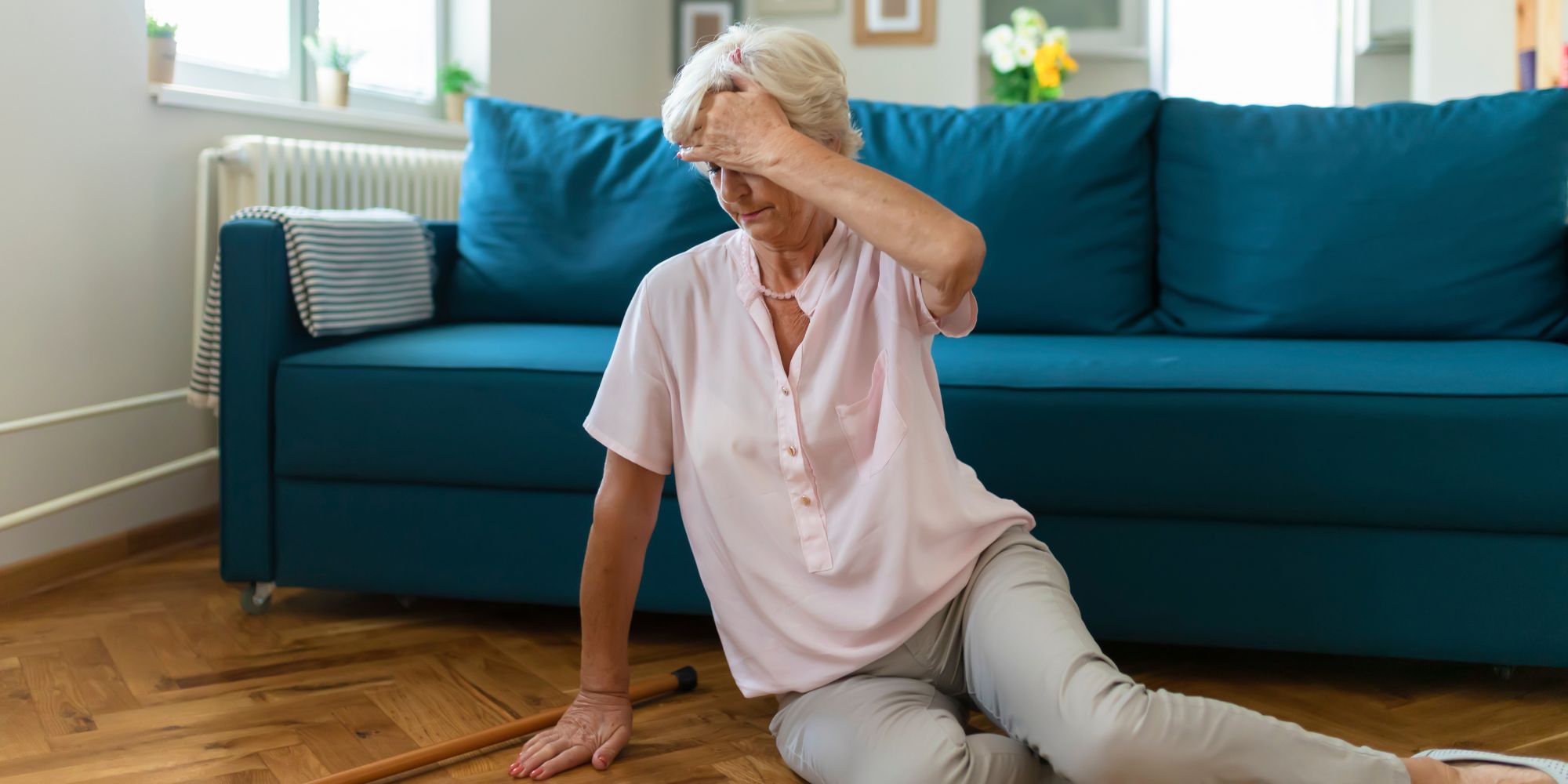Whether you’re a sprightly 70-something or an active 80-year-old, staying on your feet and fall prevention in the elderly is crucial to maintaining your independence and enjoying life to the fullest. In this ultimate guide, we’ll explore various strategies to help you stay safe, including balance exercises, proper footwear, and home modifications to prevent seniors falling at home. So, let’s dive in and make sure you’re steady on your feet!
Why Fall Prevention Matters
First things first, why is fall prevention so important? Falls are a leading cause of injury among seniors, often leading to broken bones, hospital stays, and a loss of independence. But the good news is that many falls are preventable. By taking a few proactive steps, you can reduce your risk and continue doing the things you love.
Balance Exercises to Keep You Steady
Keeping your balance is key to fall prevention in the elderly. Here are some exercises that can help:
1. Heel-to-Toe Walk
How to do it: Stand up straight and place one foot directly in front of the other, heel to toe. Walk forward slowly, focusing on a straight line. This exercise helps improve balance and coordination.
Tip: Practice this exercise near a wall or sturdy piece of furniture in case you need to steady yourself.
2. Single-Leg Stands
How to do it: Stand on one leg for as long as you can, up to 30 seconds. Switch to the other leg. This strengthens your legs and improves balance.
Tip: Hold onto a chair or countertop for support if needed. As you get better, try doing it without holding on.
3. Tai Chi
How to do it: Join a local Tai Chi class or follow a video online. Tai Chi involves slow, deliberate movements and has been shown to improve balance and reduce the risk of falls.
Tip: Many community centres and senior centres offer Tai Chi classes, often for free or at a low cost.
Proper Footwear: Your Foundation for Stability
What you wear on your feet can make a big difference in preventing falls. Here’s what to look for:
1. Non-Slip Soles
Why it matters: Shoes with non-slip soles provide better traction, especially on wet or polished surfaces.
Tip: Check the tread on your shoes regularly and replace them if they’re worn out.
2. Supportive Shoes
Why it matters: Good arch support and a snug fit help keep your feet stable and reduce the risk of slipping.
Tip: Avoid shoes with high heels or those that are too loose.
3. Comfortable Fit
Why it matters: Shoes that fit well are less likely to cause blisters or discomfort, which can affect your walking.
Tip: Have your feet measured each time you buy new shoes, as foot size can change with age.
Home Modifications: Making Your Space Safe
Your home should be a haven, not a hazard. When considering fall prevention in the elderly, here are some modifications to consider:
1. Clear Clutter
Why it matters: Why it matters: Tripping over objects is a common cause of seniors falling at home.
Tip: Keep walkways clear of books, shoes, and other items. Consider using storage solutions to keep things tidy.
2. Install Grab Bars and Handrails
Why it matters: Having something sturdy to hold onto can prevent a fall.
Tip: Place grab bars in the bathroom near the toilet and in the shower. Install handrails on both sides of stairways.
3. Improve Lighting
Why it matters: Poor lighting can hide hazards.
Tip: Use bright bulbs in all rooms and install night lights in hallways and bathrooms to help you see clearly at night.
4. Secure Rugs and Carpets
Why it matters: Loose rugs can slip and slide, causing falls.
Tip: Use double-sided tape or non-slip mats to keep rugs in place. Better yet, remove loose rugs altogether.
5. Rearrange Furniture
Why it matters: Creating clear pathways reduces the risk of tripping.
Tip: Arrange furniture so that there’s plenty of space to walk. Avoid placing low tables or footstools in high-traffic areas.
Regular Check-Ups: Stay Ahead of Health Issues
Keeping up with regular health check-ups can help you stay on top of any issues that might increase your fall risk. Here’s what to consider:
1. Vision and Hearing Checks
Why it matters: Poor vision and hearing can make it harder to avoid hazards.
Tip: Have your eyes and ears checked annually. Wear glasses or hearing aids as prescribed.
2. Medication Review
Why it matters: Some medications can cause dizziness or drowsiness.
Tip: Review your medications with your doctor or pharmacist regularly. They can adjust dosages or suggest alternatives if needed.
3. Bone Health
Why it matters: Strong bones are less likely to break if you do fall.
Tip: Ensure you’re getting enough calcium and vitamin D. Discuss bone density testing with your doctor.
Staying Active: A Key to Fall Prevention in the Elderly
Regular physical activity is one of the best ways to maintain your balance and strength. Here are some tips to keep you moving:
1. Join a Class
Why it matters: Group exercise classes can be motivating and fun.
Tip: Look for classes specifically designed for seniors, such as gentle yoga, water aerobics, or dance.
2. Walk Daily
Why it matters: Walking is a simple way to stay active and improve balance.
Tip: Aim for at least 30 minutes of walking each day. Start with shorter walks and gradually increase the time as you feel more comfortable.
3. Strength Training
Why it matters: Building muscle strength supports your joints and improves balance.
Tip: Use light weights or resistance bands to perform exercises that target all major muscle groups. Always check with your doctor before starting a new exercise routine.
Staying Social: The Fun Side of Fall Prevention
Believe it or not, staying socially active can also help prevent falls. Here’s how:
1. Join a Club
Why it matters: Clubs and social groups keep you engaged and active.
Tip: Look for local clubs that interest you, whether it’s a gardening club, book group, or walking group.
2. Volunteer
Why it matters: Volunteering keeps you moving and provides a sense of purpose.
Tip: Find a volunteer opportunity that you’re passionate about. It could be anything from helping at a local charity shop to mentoring younger people.
3. Stay Connected
Why it matters: Regular social interaction can boost your mood and encourage you to stay active.
Tip: Make regular plans with friends and family. Even a simple cup of tea with a neighbour can make a big difference.
Conclusion
Fall prevention in the elderly is all about being proactive and making small changes that add up to big benefits. By incorporating balance exercises into your routine, choosing the right footwear, making your home safer to prevent seniors falling at home, staying active, and maintaining regular health check-ups, you can significantly reduce your risk of falls.
Remember, it’s never too late to start making these changes. So take that first step today, and keep enjoying life to the fullest, safely and confidently!
Stay safe and keep smiling!
Additional Resources
For further information and support on fall prevention in the elderly, check out these helpful resources. Each link provides valuable insights and practical tips to help you stay safe and maintain your independence.
- NHS: Preventing Falls in Older People – Comprehensive guide on fall prevention, including risk factors and prevention strategies.
- Age UK: Staying Steady – Downloadable guide with exercises and tips to help prevent falls and stay steady.
- RoSPA: Falls Prevention in Later Life – Strategies and advice on preventing falls for older adults.
- NHS Inform: Keeping Active to Help Prevent Falls – Guidance on staying active and exercises to reduce fall risk.
- Versus Arthritis: How Balancing Exercises Help Reduce Fall Risk – Information on balancing exercises and their role in reducing fall risk for those with arthritis.

